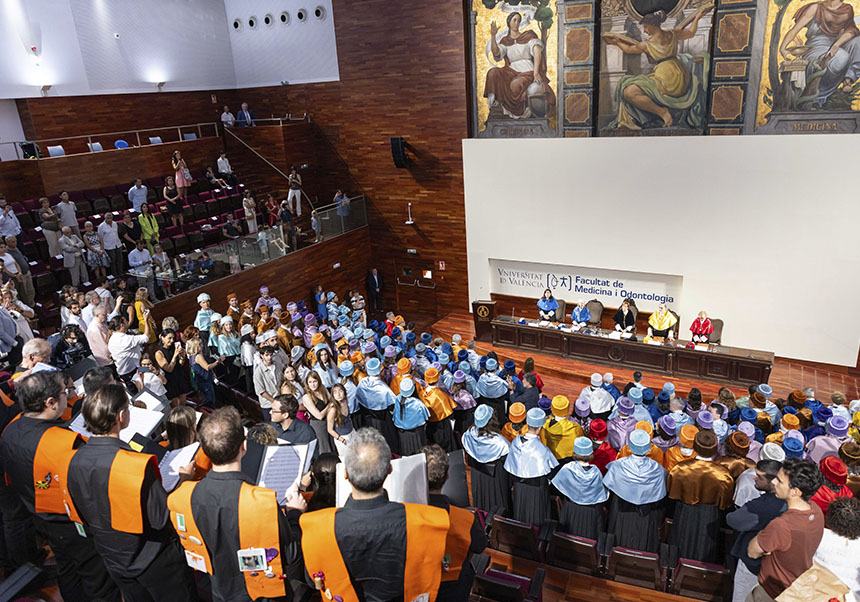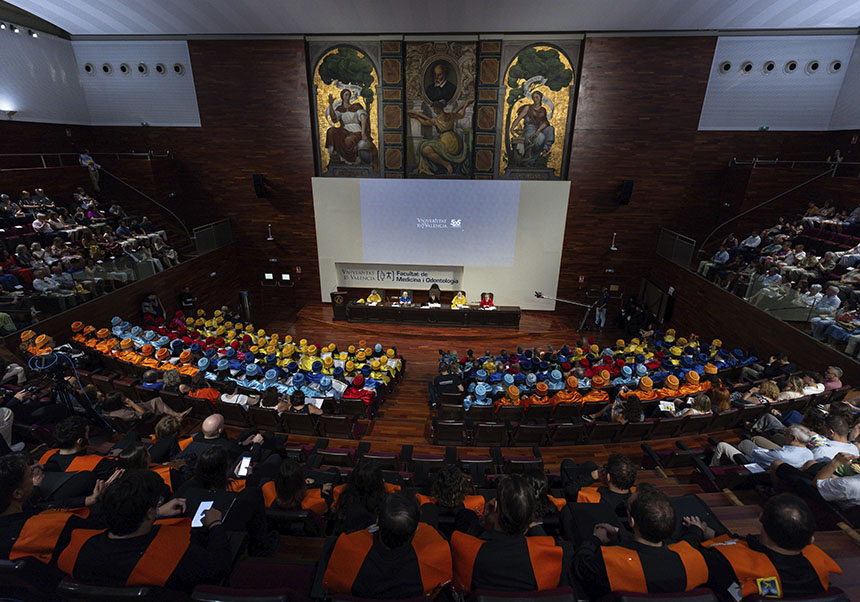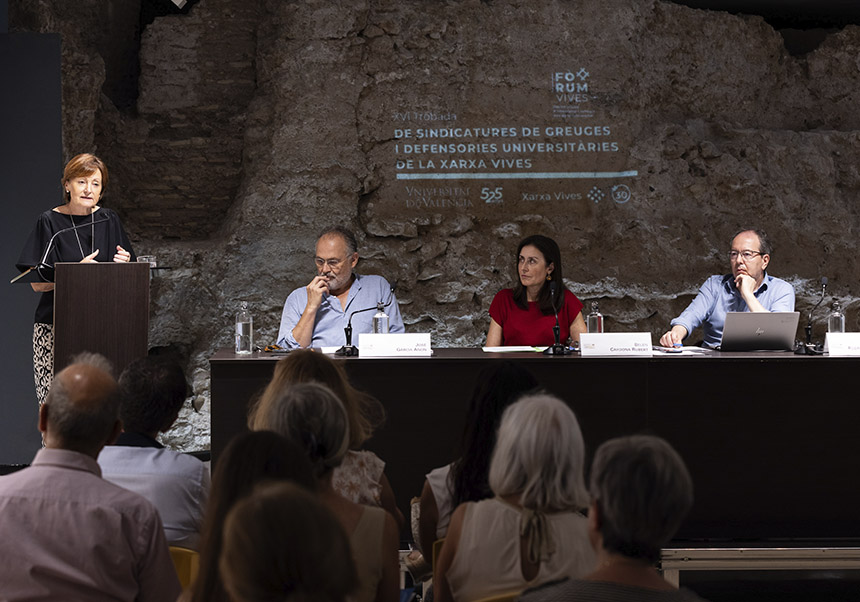
The sculpture Adam i Eva, of the Valencian artist Andreu Alfaro is installed since this morning in the Tarongers Campus of the University of Valencia. The work symbolises equality between men and women, was commissioned by the University of Valencia in 2000. The Alfaro Hofmann family has decided to donate it to the University because, as Andrés Alfaro Hofmann, the son of the artist, has emphasised ¨Andreu Alfaro was excited since the outset of this project ¨
The principal of the University of Valencia, Esteban Morcillo, said that he was ¨contented and grateful¨ for the unveiling of the work. "Andreu Alfaro is a reference as an artist and a person committed to the society in which he lives. The University of Valencia he wants to use the art language to make a statement. To make a public and lasting commitment, with equality of women. A commitment that we don´t want to forget, " said the principal.
Alfaro told reporters at the time of the assignment his satisfaction at the fact that "the University of is ahead of all and chooses an image that reflects one of the great achievements of our time to be the symbol of their campus: the growing role of women", as noted in the presentation of the sculpture, located in the garden area of the campus, at the intersection of Avenues Ramon Llull and Tarongers.
The principal has described Andreu Alfaro as "a friend of the University of Valencia. The university students have considered him one of us. Therefore in 1998, the University of Valencia wanted him to assist in holding the Fifth Centenary Celebration and designing the commemorative medal. Besides, six years ago, we resorted to Alfaro in order to recall the figure of Antoni Cavanilles, in on the second anniversary of his death, with his sculpture, which is installed at the Botanical Garden. And when we were asked recently the collaboration in raising awareness of an interesting and unknown facet of Alfaro: his work as a designer and creative advertising, we didn't hesitate for a moment and supportedthe exhibition “L’altre Alfaro”, which was opened at the Centre de Cultura Contemporànea Octubre (October Centre for Contemporary Culture) until last week¨ said Esteban Morcillo.
"As a public show of our appreciation to him and his work, in the past month of April, Governing Council a agreed toa proposal by Vice-Principal for Culture, Equality and Planning, Antonio Ariño, said Esteban Morcillo, to award him with the medal of the institution. It has been our way of strengthening this relationship of friendship. "
The principal has publicly expressed his gratitude "to the Alfaro-Hofmann family for their presence at this activity. And ask them to transmit it to Andreu with a hug, we feel fortunate to have this permanent show of his creativity on our campus, we will always remember this commitment, "he stated.
The ceremony was attended by relatives and friends of Andreu Alfaro, as well as members of the university community. The principal was accompanied by Antonio Ariño, vice-principal of Culture, and Clara Martínez, Vice-principal for Sustainability and Infrastructure.
Contemporary Instructor
Andreu Alfaro is one of the great Spanish sculptors of the second half of the twentieth century. The mention of his name is essential when it comes to cutting-edge generation of the late 50's, together with those of Tàpies, Chillida, Sempere, Millares or Saura.
In Valencia he was part of the legendary Grupo Parpalló, which represented the first conscious attempt to be modern. In his case, he was the first sculptor in Valencia that retook the legacy of the avant-garde, as his first investigations were inspired by Russian Constructivism.
This free and individual investigation paid off in the 70s, when Alfaro, fully devoted to his artistic career, beomes known to a wider public with works performed on industrial materials (aluminum, steel or methacrylate), which skillfully exploit the visual possibilities of symmetry and repetition of geometric shapes, with surprising optical and kinetic effects as a result, that link the author with these international movements. With these works Alfaro gained his first successes in the second half of the 70s and early 80s. Especially with his monumental sculptures installed in streets, squares and gardens of several Spanish and German cities. Some works like <i> generatrices</i> whose materials and shapes well symbolised the desire for progress and modernity of these optimistic years. In the 80s, Alfaro took a radical turn to his work, taking up such basic problems in sculpture as volume, or introducing new ones as figuration, from personal reflections on major cultural motifs (the human body, the Baroque, the figure of Goethe, classical statuary or stelae), while he began to use more traditional materials such as limestone or marble.

 para rectorado.jpg)

















